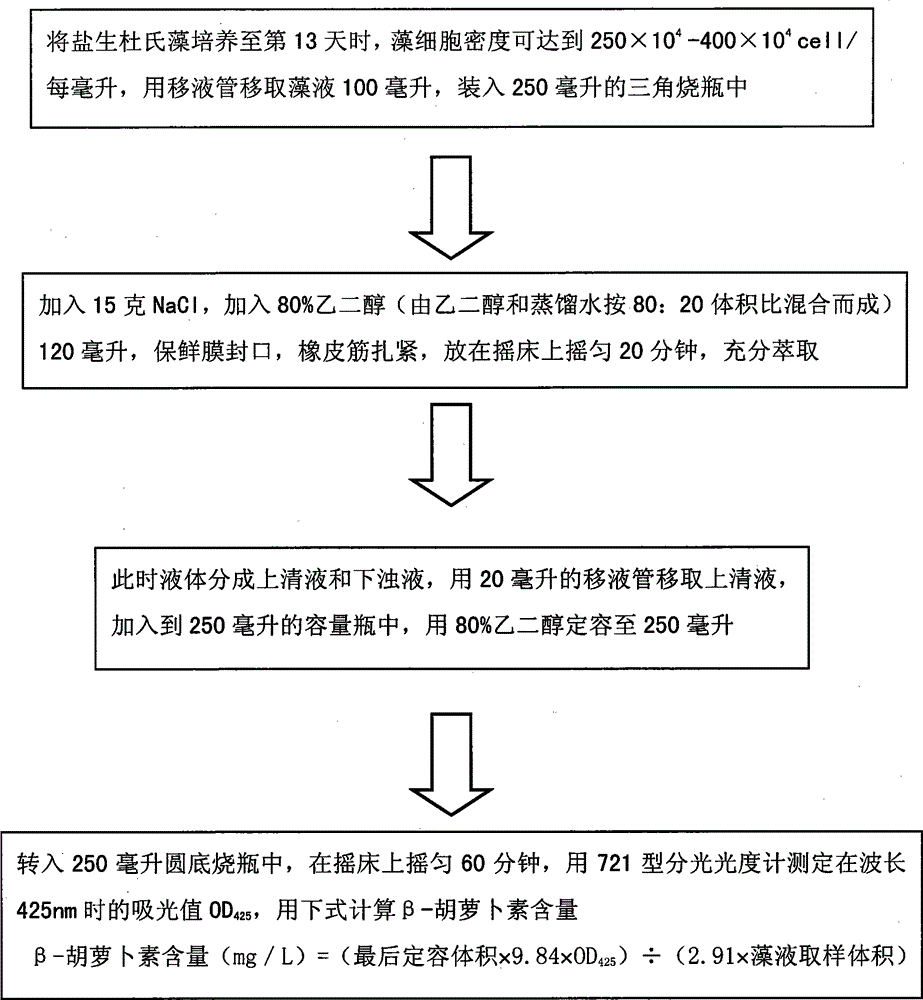Method for determining content of trace elements in DunalieUa salina
A technology of Dunaliella salina, medium and trace elements, applied in the direction of color/spectral characteristic measurement, etc., which can solve the problems of poor practicability, troublesome operation, and high requirements for testers
- Summary
- Abstract
- Description
- Claims
- Application Information
AI Technical Summary
Problems solved by technology
Method used
Image
Examples
Embodiment Construction
[0023] Determination method of β-carotene content
[0024] 1) In step 1, when Dunaliella salina is cultured to the 13th day, the cell density of the algae can reach 250×10 4 -400×10 4 cell / per milliliter, pipette 100 milliliters of algae liquid, and pack in a 250 milliliter Erlenmeyer flask;
[0025] 2) Add 15 grams of NaCl in step 2, add 120 ml of 80% ethylene glycol (mixed by ethylene glycol and distilled water in a volume ratio of 80:20), seal with plastic wrap, tie the rubber band tightly, and shake evenly on a shaker for 20 Minutes, full extraction;
[0026] 3) In step 3, the liquid is divided into supernatant and turbidity at this time, and the supernatant is pipetted with a 20 ml pipette, added to a 250 ml volumetric flask, and the volume is adjusted to 250 ml with 80% ethylene glycol;
[0027] 4) Step 4 is transferred to a 250 ml round-bottomed flask, shaken evenly on a shaker for 60 minutes, and measures the absorbance value OD at a wavelength of 425 nm with a 721 ...
PUM
 Login to View More
Login to View More Abstract
Description
Claims
Application Information
 Login to View More
Login to View More - R&D
- Intellectual Property
- Life Sciences
- Materials
- Tech Scout
- Unparalleled Data Quality
- Higher Quality Content
- 60% Fewer Hallucinations
Browse by: Latest US Patents, China's latest patents, Technical Efficacy Thesaurus, Application Domain, Technology Topic, Popular Technical Reports.
© 2025 PatSnap. All rights reserved.Legal|Privacy policy|Modern Slavery Act Transparency Statement|Sitemap|About US| Contact US: help@patsnap.com


